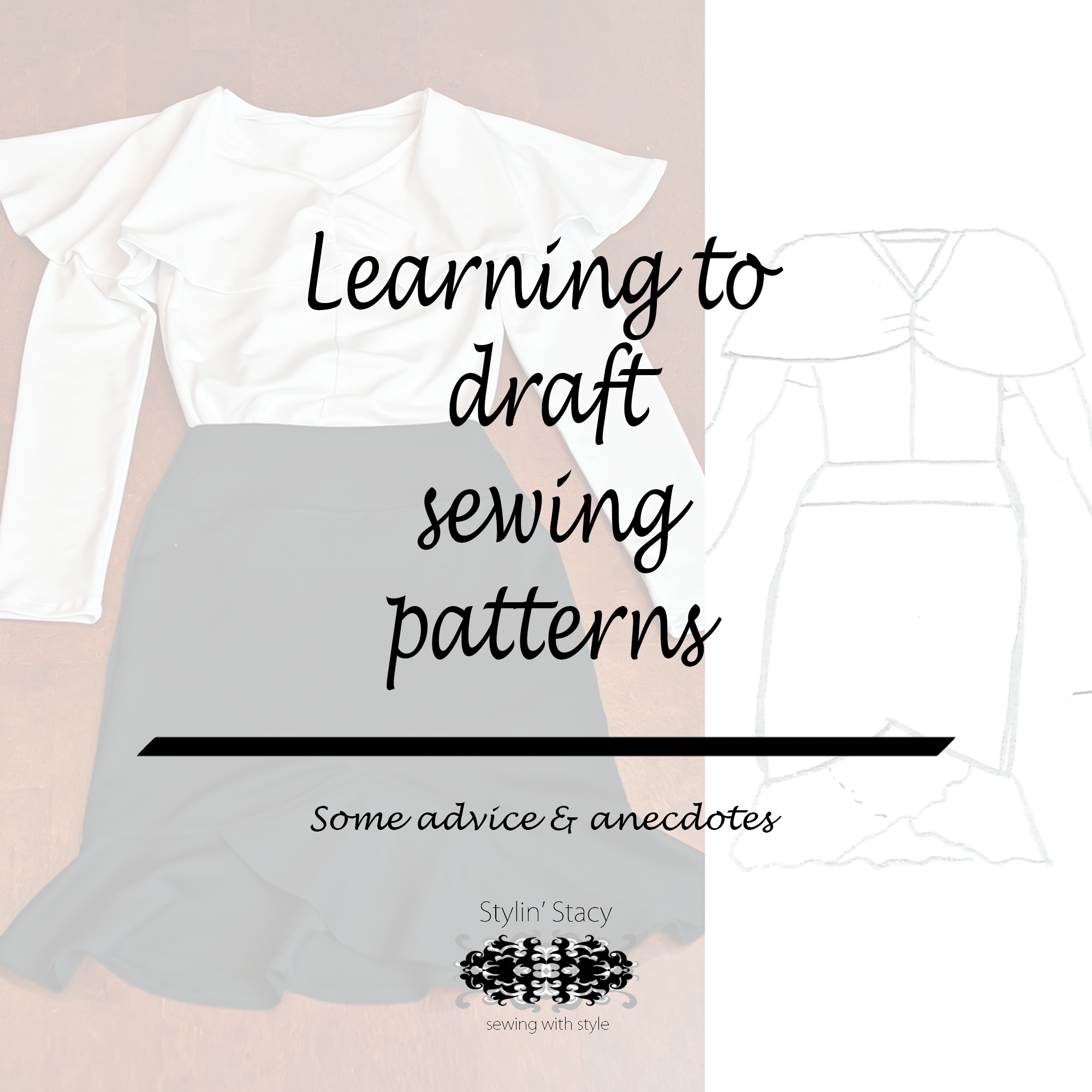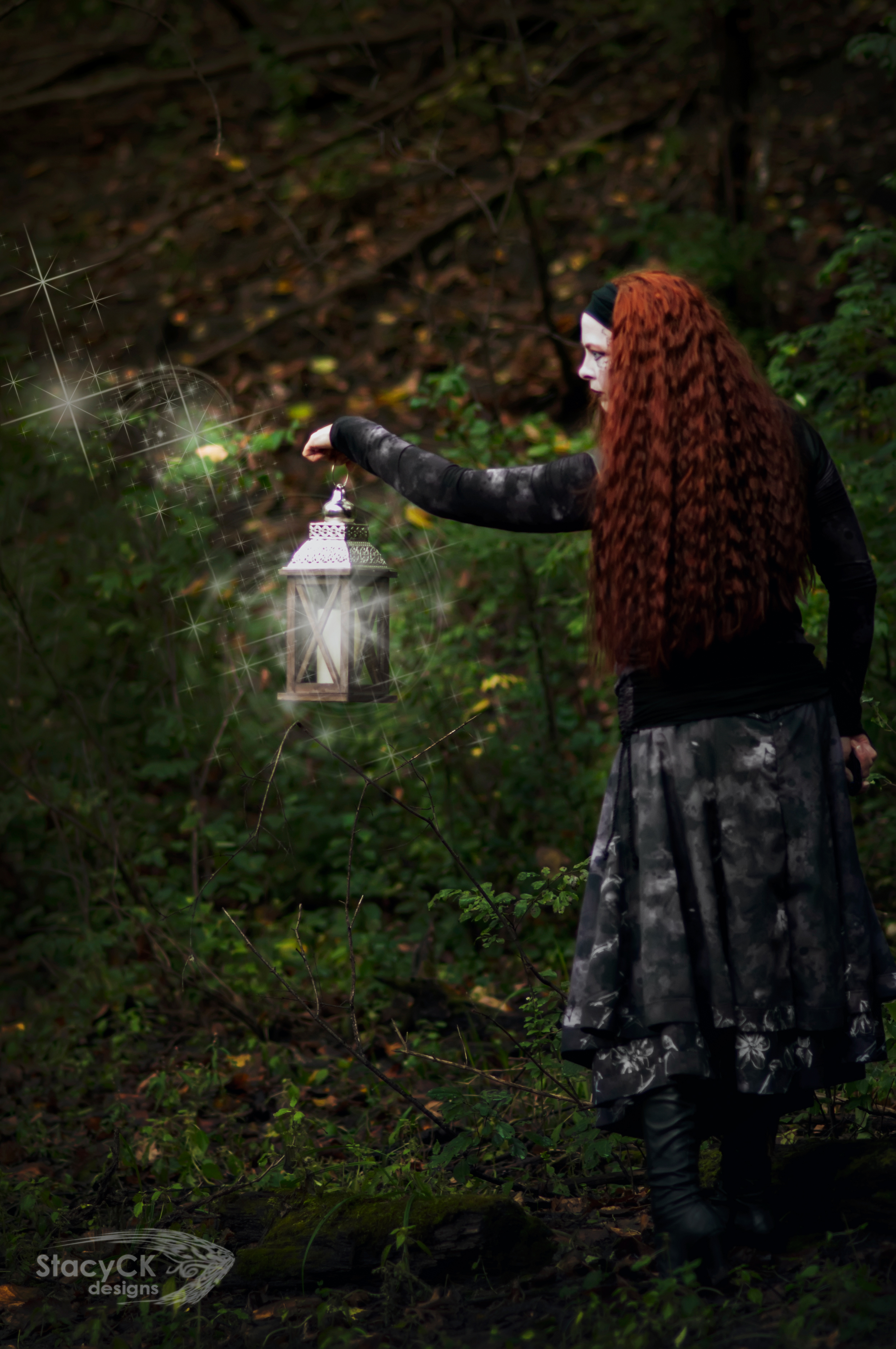If you have followed my sewing much, you will know that I tend to draft a lot of the patterns that I sew. I love being able to sketch something out, and then turn it into a piece of clothing. Drafting patterns is not rocket science, but experience in sewing does really help.
The basics
When drafting something, I don’t start with pieces of tracing paper.
First, I figure out what I want to make, how I want to make it and the pieces required…in my head. The longest part of the process is the “figuring it out”, and once I know what I want, and how it will go together, the drafting goes much easier.
Next, I use a basic block to use as my starting point. You can make a block from scratch, or you can alter an existing basic pattern that you have used. You can also trace off a shirt that you know fits you well. The main goal is fitting it so you know that anything you make with it will fit you well. Pay attention to any pulling across the bust, sloping shoulders, wrinkles at the arm, etc. Fix what is needed and then make sure you trace off your final copy on good paper.
The basic block is really the cornerstone of drafting patterns. You need to have a starting point, so once you get your basic block fitted to you, that is what you use for your future patterns. You just trace it off and start working on the modifications you need to do. It is good to have both knit and woven blocks for tops and bottoms, as they are not really interchangeable.
I use a lot of measuring tools, as there is a bit of math in drafting patterns. I use a long clear ruler, a circle cutter and French curves. A basic understanding of pattern shapes for collars, bodices, sleeves, etc. is needed.
If you haven’t put together a lot of patterns, I would suggest getting some sewing books. This stack is missing my Vogue Sewing book, that I would also really recommend. The books will help you with construction and pattern pieces.

I started with easy things to draft, then started adding shape to them. Skirts were simple, pants were harder to fit, then came button up shirts and such. Knits are much more forgiving than wovens. All these things helped me understand construction and where things can go wrong. I have wasted many pieces of fabric along the way, but I learned from every mistake I made. Sometimes the seam ripper was used a lot.
My history
I first started making clothes with Simplicity, McCalls and Butterick patterns. My Grandma Jo walked me through how to cut out the fabric, mark the notches, watch grainlines and put everything together. She taught me how to put in set in sleeves, add buttonholes and buttons and put in a zipper. That gave me a solid base to start drafting my own patterns.
I started experimenting with simple skirts and some pants in junior high. I still used patterns for a majority of what I wanted, though. Throughout junior high and high school I made a myriad of things, but made a lot of button down shirts since my sister and I participated in Rodeo and needed those for competitions.
After high school, I got busy with college and then a full time job and didn’t make much in the interim. Once I got pregnant and realized how little options there were for clothes, I dusted off my sewing machine and figured out how to make maternity pants that were long enough for my legs. I usually started with a pattern, and then modified it after the first one for what I needed (added the band…maybe a bit extra in the belly).
After my son was born I didn’t sew much in between the two kids, as pregnancy was not kind to my gag reflex. Nausea all.the.time. After the girl was born, I saw these cool baby carriers called Mei Tai’s (Asian baby carriers). I made one that had a silk panel on the front and padded straps, like a backpack, and all of a sudden I had people wanting me to make them for sale. I did end up doing that for several months until I got burned out (I made over 60 of them eventually). I have seen some still being used many years later. I made those suckers super sturdy.
After I was done with that, I had started getting into photography and purchased a DSL camera. Well, the little cuties needed some fun clothes for their photo shoots!

I started making clothes, mostly for the girl, and soon figured out that most patterns didn’t fit the best and they were all really copies of each other. I started working a little with knits and modifying patterns. It soon became apparent that a serger was in order. Sergers are good for gathering, too.

That was when I started really drafting things. It started out slow with little shirred back dresses that just took math. That was cute, so I figured out how to draft a dress with a gathered back so it has some give to it.

Then I started seeing things in ready to wear that I wanted to remake, like this Stella McCartney copy. I figured out how to make the gathered top and add binding. The inside wasn’t the prettiest, but it worked!

Those were fun to make, just took a TON of gathering. Once those started to bore me, then I wanted to make more fitted items. I started out just doing pattern modifications, and then started modifying them more and more until I was full on drafting my own patterns. This dress was an Ottobre pattern that I added a collar stand and circle skirt to it.

I was also pretty thoughtful when drafting things to make sure they worked for my kiddo. Take these rompers. I wanted to make sure she could get in and out for bathroom changes at school, so I made them zip up the front. They weren’t super fitted, so pretty easy to draft with wovens.

If you notice above, I like embellishments. It takes something plain into something special.


I started drafting more for my kids at first and then I got unafraid and made clothes for myself again. Using patterns I made a dress or two, then went to skirts where all I really needed was some measurements. Finally I wanted something harder. I started with a RTW top that I liked how it fit. It had princess seams, was a stretch woven and looked nice on me. I copied it off, made a few mistakes, then made a bunch!
That shirt was the base for my hooded jacket.

When I draft something I start with the main pieces and basic block that I copy and change. I draft the front, back and sleeves then work on anything additional afterwards (collars, pockets, cuffs). When I drafted this jacket I started at the front, worked my way around the back, to the sleeves and finally the hood. I used a basic shirt block, math and then how it would look in 3D from my imagination.

I have been sewing for over 30 years. Do I think you need to be sewing that long to learn? Definitely not. There were many years I didn’t sew much at all. I think all that I have sewed along the way definitely helps in knowing what pieces are needed and construction methods, though. I am continually learning what NOT to do. 🙂
Now, will I ever take these things I drafted and start a pattern company? I would like to eventually. I need time to learn how to digitally draft first. That may happen in another year or so. We’ll see. It would be nice to do something fun for work for a change!
Some examples of patterns I have made:
Feel free to ask any questions. I really think just diving in and giving it a shot is a good way to go. That is what I did when I started. I had failures. I still do occasionally. Just don’t get down on yourself, learn from them, and try again!
From my “you can do it!” post from last year:
Start by believing in yourself, and your abilities. Have faith that whatever you want to do in your life, or be as a person, you can achieve. It just takes effort…and that first step. You may stumble from time to time, but that is just part of the process call learning. You will learn what not to do next time, and be able to take that next step forward. Eventually you will reach that place where you are content with your achievements, and if not…take the next fork in the road and go down a new path.
Life is a journey, so enjoy it by doing things that give you joy. The other alternative is to stay rooted in place, and you, my dears, are not a tree.

























Your mai tai’s are so pretty! No wonder you ended up making about 60 of them!! When it comes to drafting, math is my weak point. Which is why I keep avoiding my craftsy drafting classes hahaha